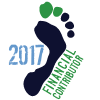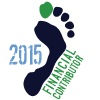(Moderator's note: this thread has gotten all off track. If you just want to talk about starting BFR, find or start a different thread. If you want to actually talk about the OP's proposal concerning "alignment" and such, stay here. Thanks -- stomper.)
It has been interesting to me (being new to the minimalist/barefoot running craze and being a PT) that in every website I have found, the advice has been to start slow and wean into running "barefoot". Good advice for many people taking on this endeavor.
I believe that one thing that should be addressed is a person's skeletal alignment and muscular balance. Starting slow is excellent advice but to HOPE that a person's body will adjust is a gamble. So many of the described injury issues I am reading can be attributed to misalignment of the hips or ,as your example shows, an upper body issue.
The most common issues linked to hip misalignment are: plantar fasciitis, achilles tendonitis, patellar tendonitis, IT band syndrome, hip flexor tendonitis. The issue starts with our society's general lack of activity and most of our time spent sitting (either work/school/video games). 40 hours or more of sitting versus 20 minutes x 3-4/week, which do you think wins? And consider that many people started running for health reasons after years of mostly being sitting/relatively inactive. Also consider how much the majority of people spend time working on flexibility countering the negative effects of "the chair".
The human body has an amazing ability to adapt to the demand placed in it. If "The Chair" is what our bodies are exposed to for years and years for hours upon hours then it will adapt to the chair position. The result is shortened or tight hip flexors, tight hamstrings, external rotation of the hips and ,depending on the type of work, rounded shoulders with a forward head. Unless the "char" is addressed and taken out of the body it (the body) will compensate for the issues I described. This leads to stress in structures in ways that are not natural. Like a car that is out of alignment, the signs are subltle and get worse with increased demand. Tendonitis , where ever is might be felt, is a sign that something is not aligned/functioning properly. The question is what is the cause not just treating the symptom.
Tight hip flexors prevent the hip from extending leading to stress in the low back. External rotaion of the hips can lead to landing too much on the outside of the heel/foot and loading onto the outer knee and loading onto the IT band. Inversely an internally rotated hip leads to loading onto the inside of the foot/ arch (plantar fasciitis), loading onto the inside of the knee.
These issues can be addressed through progressive and directed exercise routines. This along with a gradual weaning into minimal/barefoot running can decrease the amount of injury being seen "Due to barefoot running" as many nay sayers are quick to point out in their efforts to discredit the natural way we were meant to ambulate.
More later on the effects of modern footware and the upper body connection
Orlando Gomez PT
www.adapttraining.com
It has been interesting to me (being new to the minimalist/barefoot running craze and being a PT) that in every website I have found, the advice has been to start slow and wean into running "barefoot". Good advice for many people taking on this endeavor.
I believe that one thing that should be addressed is a person's skeletal alignment and muscular balance. Starting slow is excellent advice but to HOPE that a person's body will adjust is a gamble. So many of the described injury issues I am reading can be attributed to misalignment of the hips or ,as your example shows, an upper body issue.
The most common issues linked to hip misalignment are: plantar fasciitis, achilles tendonitis, patellar tendonitis, IT band syndrome, hip flexor tendonitis. The issue starts with our society's general lack of activity and most of our time spent sitting (either work/school/video games). 40 hours or more of sitting versus 20 minutes x 3-4/week, which do you think wins? And consider that many people started running for health reasons after years of mostly being sitting/relatively inactive. Also consider how much the majority of people spend time working on flexibility countering the negative effects of "the chair".
The human body has an amazing ability to adapt to the demand placed in it. If "The Chair" is what our bodies are exposed to for years and years for hours upon hours then it will adapt to the chair position. The result is shortened or tight hip flexors, tight hamstrings, external rotation of the hips and ,depending on the type of work, rounded shoulders with a forward head. Unless the "char" is addressed and taken out of the body it (the body) will compensate for the issues I described. This leads to stress in structures in ways that are not natural. Like a car that is out of alignment, the signs are subltle and get worse with increased demand. Tendonitis , where ever is might be felt, is a sign that something is not aligned/functioning properly. The question is what is the cause not just treating the symptom.
Tight hip flexors prevent the hip from extending leading to stress in the low back. External rotaion of the hips can lead to landing too much on the outside of the heel/foot and loading onto the outer knee and loading onto the IT band. Inversely an internally rotated hip leads to loading onto the inside of the foot/ arch (plantar fasciitis), loading onto the inside of the knee.
These issues can be addressed through progressive and directed exercise routines. This along with a gradual weaning into minimal/barefoot running can decrease the amount of injury being seen "Due to barefoot running" as many nay sayers are quick to point out in their efforts to discredit the natural way we were meant to ambulate.
More later on the effects of modern footware and the upper body connection
Orlando Gomez PT
www.adapttraining.com














